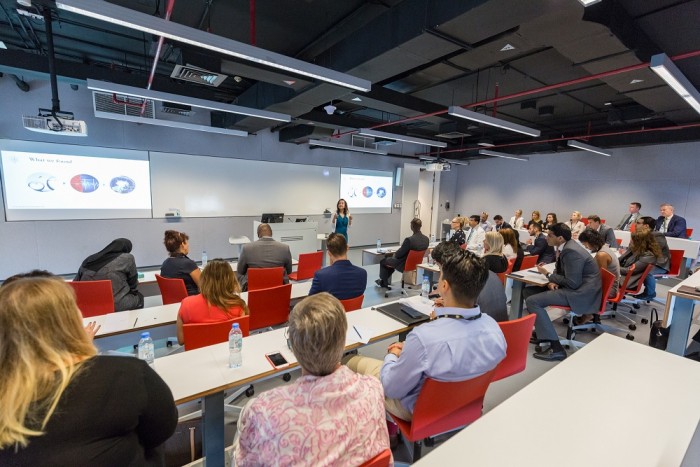A recent study by the Ashridge Executive Education revealed that virtual learning is as effective as face-to-face delivery, if designed and executed well, when developing skills within an organisation.
Given the growth in reliance on virtual collaboration and the development of new technologies facilitating online engagement, working virtually is becoming increasingly common in many organisations.
Ashridge Execuitve Education’s research looked into the effectiveness of virtual learning to address the pertinent question in today’s digitalised world – whether business leaders can develop competencies, resilience and resourcefulness to face leadership challenges through online learning.
The study involved 37 executives who participated in an Ashridge programme called ‘Leading on the Edge’. The programme was delivered by the same three members of faculty utilising three different learning environments: Face to Face (F2F), Blended (a combination of face to face and online learning) and Virtual experiential. The F2F two-day programme was residential, the Blended two-day programme was conducted virtually and one residentially, and the virtual two-day programme was fully virtual and participants were either at their own home or in their office.
For instance, when it comes to responding to ambiguous circumstances, 85 percent of F2F participants showed confidence, the percentage was 100 percent for those in the Blended programme and 85 percent for those participating virtually. In tackling a difficult conversation, 85 percent of F2F participants showed confidence, while this was 80 percent for Blended and 100 percent for Virtual.
The behavioural simulation which formed the basis of the three programs consisted of a simulated exercise where participants ran a company of the future, during which time they had to deal with critical incidents typical of leadership challenges, including dealing with complexity and effective decision making, leading rapid change and ambiguity, difficult conversations, balancing strategic and operational challenges, and board presentations. Everyone was asked to wear a Heart Rate Variance (HRV) monitor so that faculty could track their response when faced with stressful situations. Increased HRV is related to improved learning experience.
Sona Sherratt, senior faculty member, Ashridge, said, “There is an increasing use of virtual technologies to deliver distance learning, virtual learning and eLearning in academia and among learning and development professionals. Learning methodologies employed in different environments involve opportunities for experience, for interaction, and for feedback. Adhering to the principles, virtual experiential learning holds enormous promise for a scalable, practical solution to developing leaders in our global, digital environment.”





